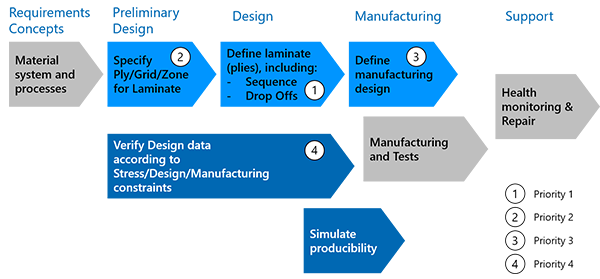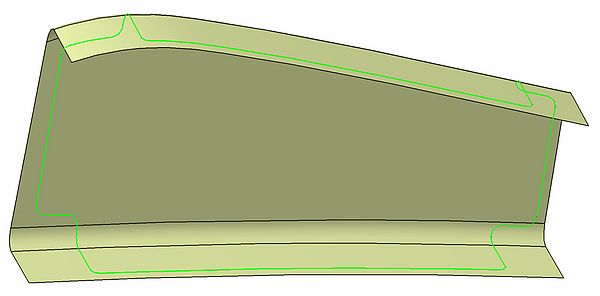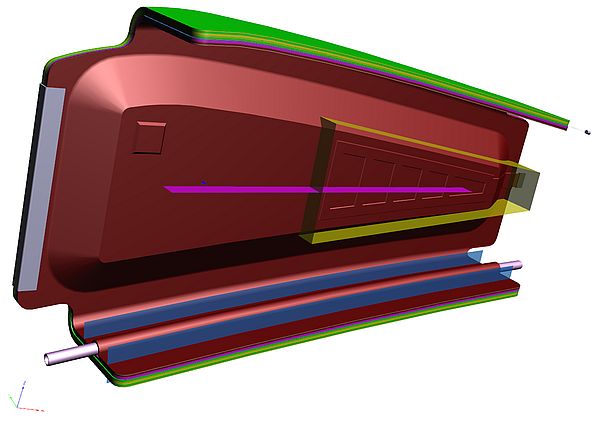LOTAR Composites Workgroup
Goals and Objectives
The objective of the LOTAR Composites Workgroup is to develop, publish and maintain standards designed to provide the capability to archive and retrieve CAD 3D composite structure in a standard neutral form that can be read and reused throughout the product lifecycle, independent of changes in the IT application environment originally used for creation.
The specific goal of the Composites Workgroup is focused on the preservation of the CAD 3D composite structures information such as:
- Sequences
- Plies
- Cores
- Material properties
- Rosette
- Orientation
A former solution has been implemented in several CAD tools (CATIA V5, V6, FiberSIM) based on the STEP AP203 ed2 standard allowing the preservation of the CAD 3D definition of the composite structures. The current solutions cover the composite structure definition where the ply geometry is based on a tooling surface and ply contours.
Since 2014, the STEP AP242 standard allows the preservation of CAD 3D tessellated solids in addition to the STEP AP203 capabilities. The preservation of the CAD 3D tessellated representation for each composite ply is a development that improves the visualization of the composite structures along with providing an unambiguous explicit representation of a composite part. This explicit 3D composite structure shape representation will also provide an unambiguous representation for purposes such as maintenance and bidding for manufacture.
Figure 1: Ply Geometry: Surface and Contour
Figure 2: Ply Geometry: 3D Tesselled Solid
Figure 3 describes a generic process of development of composite parts illustrating the main categories of composite information to be created in the Aerospace and Defence industry. The associated tasks for developing, manufacturing, and supporting composite parts are also shown. The current priorities of development of the LOTAR 3XX standards are shown as well.
 Figure 3: Composite Part Design, Manufacture, and Support
Figure 3: Composite Part Design, Manufacture, and Support
Associated LOTAR use cases
The LOTAR standards 3XX family will address the following use cases (in development):
| Name (proposal) | Status |
|---|---|
| L-T Archiving and Retrieval of CAD 3D composite design for certification and partial re-use | Draft |
| L-T Archiving and Retrieval of CAD 3D composite design for internal use | Draft |
| L-T Archiving and Retrieval of CAD 3D composite design for external support | Draft |
| L-T Archiving and Retrieval of CAD 3D composite design for consumable MBD (Model Based Definition) | Draft |
The LOTAR Family of Standards for Composites: 3xx
The planned NAS / EN 9300-3XX standards for the Long-Term Preservation of composite design information include the following:
| Part | Title (under review) | Ballot date |
|---|---|---|
| 300 | Fundamentals and concept for Long Term Archiving & Retrieval of Composite Information | 2026 |
Associated ISO 10303 Information Models
- The LOTAR standards do not define specific information models for Long Term preservation of CAD and PDM information models. They rely closely on the ISO 10303 STEP Application Protocols. The STEP modular architecture ensures the consistency of the information models subsets common to several ISO 10303 standards.
- The LOTAR P3XX family is based on:
- ISO STEP AP242 “Managed Model-Based 3D Engineering”
- ISO STEP AP209 “Multi-Disciplinary Analysis & Design”
How we work – meetings and teleconferences
- The Composite Working Group holds weekly online meetings / conference calls;
- Participation at the 4 LOTAR annual workshops;
Accomplishments of the LOTAR Composites Working Group
- Development of the LOTAR standards for composite : family P3XX;
- Involvement in the development of the STEP AP242 standard;
- Prototype part developed to anticipate future composite structure in order to demonstrate concepts;
- Development of the STEP recommended practices regarding composite structures;
- Performing independent tests of these standards in CAD tools for the purpose of interoperability;
- Encourage CAD vendors to enhance their tools as the standards progress (AP209, AP242, 3D tessellated AP242 capability…).
External links
- JEC: www.jeccomposites.com
- CAx-IF : www.cax-if.org
- SAMPE: http://www.sampe.org/
- STEP AP242: www.ap242.org
- STEP AP209: www.ap209.org
Contacts
Please use the contact form to get in touch with us if you would like more information about the team, workgroup activities and output, or discuss participating in the topic. The team co-chairs are:
Workgroup Leader Europe
Pierre Duchier
Airbus
Workgroup Leader Americas
John Van Horn
The Boeing Company


